Reading time is around minutes.
Performance -
Testing the performance of a drive of any type is a pain. Sure you can get repeatable numbers using a few of the more readily available testing utilities; HD Tune Pro, Sisoft’s SANDRA, and others. For our testing we decided to run HD Tune Pro along with HDTach and PCMark8’s storage tests. Between these we felt that we were able to compile a good range of information about the performance of the driver under synthetic workloads. To add to this we did a large disk to disk 30GB file transfer (moving from one SATA 3.0 SSD to the test drive and back) to get a good feel for real world read and write performance. The results are shown below in graph form as well as the actual screen shots of the results.
PCMark8 Storage Tests -
PCMark 8 tests are very similar to what we saw in PCMark7, but they appear to give a little more accurate measure of what you might expect in the real world. Our graph does not show that many devices simply because the older ones are no longer available. We will continue to build on our testing group as newer products come out.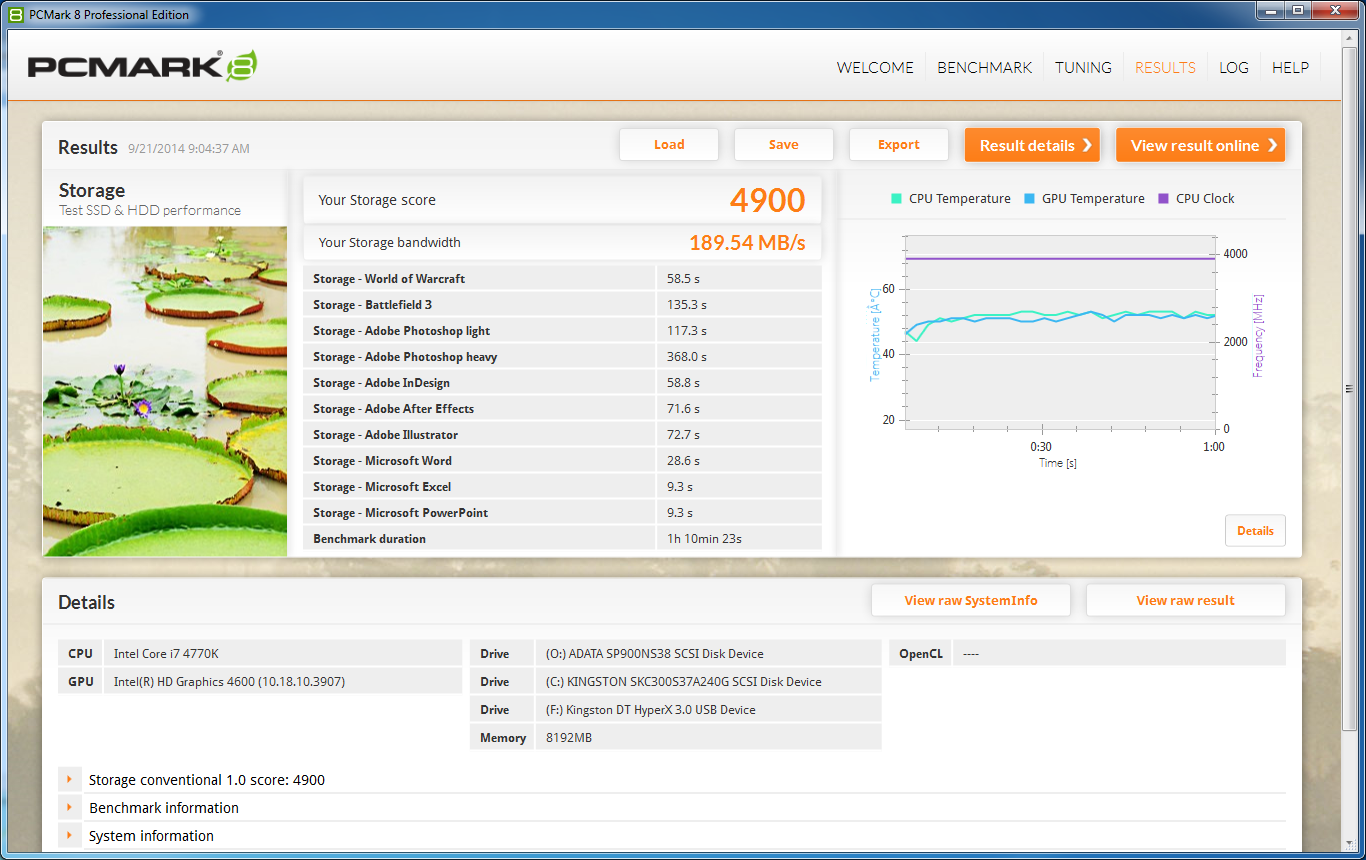
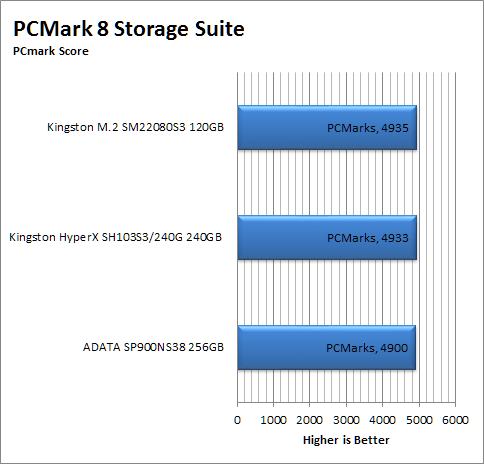
Under PCMark8 we find the ADATA M.2 drive drifting to the back of the testing group. This was not entirely unexpected and the delta is relatively small.
HDTach -
HDTach is an older application, but it is also one that we have had good luck with. It follows the same style of testing that we find with PCMark, HDTune and even Atto Diskbench. It reads from the disk to see what the maximum, minimum and average speeds are. We shows the maximum speed in the comparison chart, but you can see more data in the screenshot below.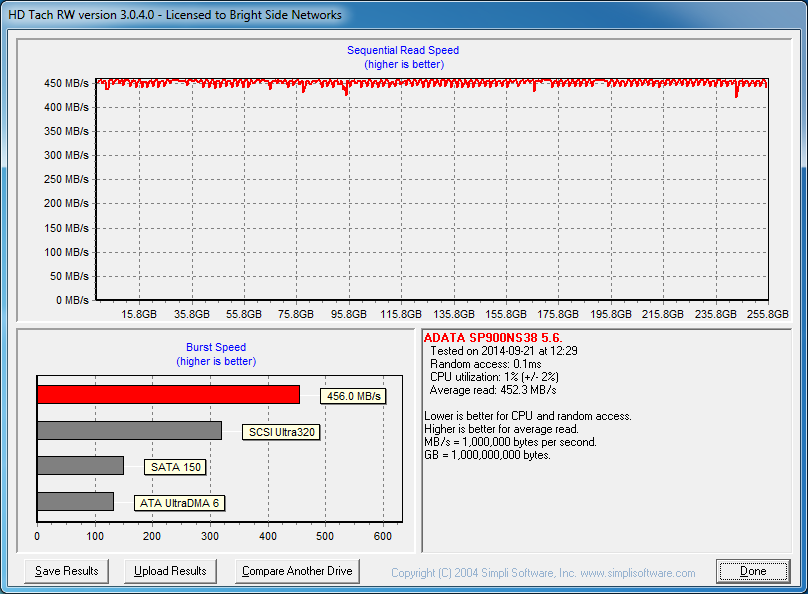
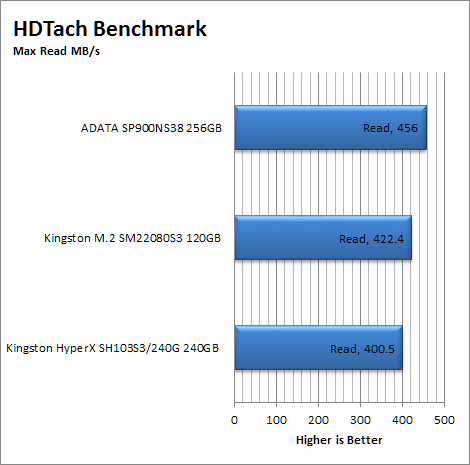
Under the loving attention of HDTach the ADATA M.2 drive pushes its way to the front of the pack with a decent lead of 33.6 MB/s. This will come in handy when you are trying to watch a video file stored or you are loading the textures for the next level on a game. It is not bad at all.
HD Tune Pro 4.6 -
HD Tune Pro is another application that can give you the run down on your HDDs it performs both read and write tests although its write test is destructive and cannot be run on a drive that contains any partition information. For our testing here we ran both the read and write tests and recorded the average transfer rates.
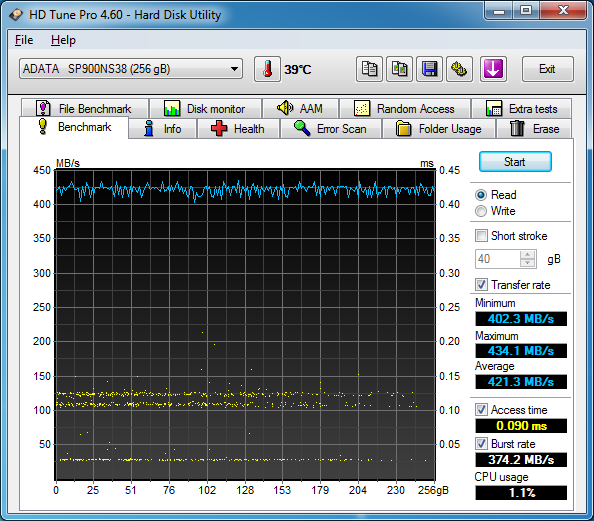 |
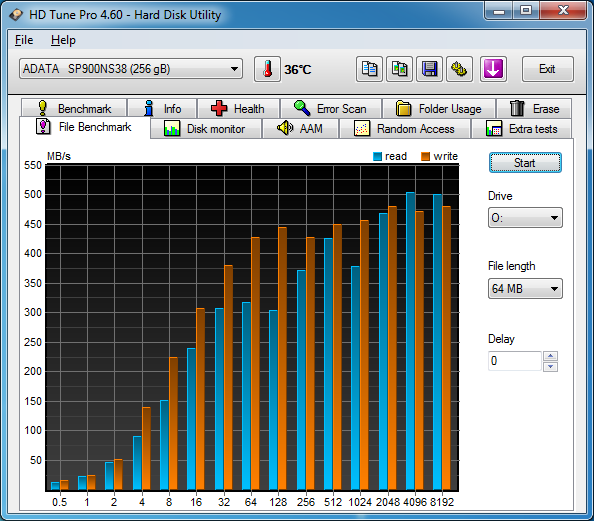 |
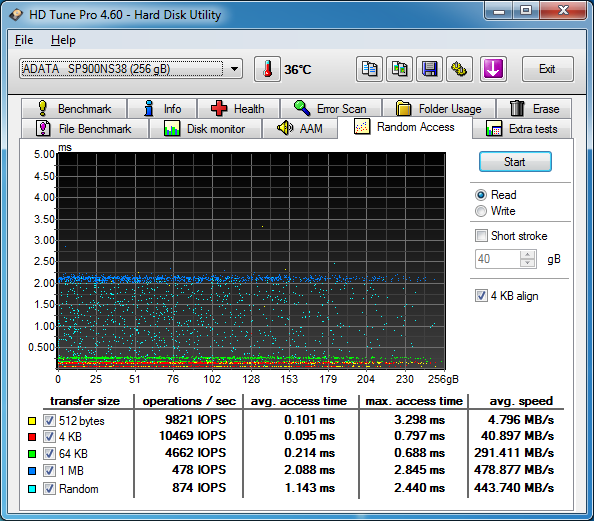 |
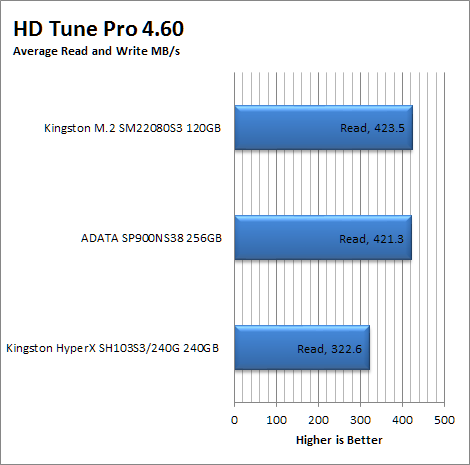
Under HDTune the ADATA is right in line with our other M.2 test candidate. Both perform very well here due to their drive cache. This also puts them squarely in the vertical for HTPCs, media center style devices and any system build with high read access times in mind. The small and thin size makes them perfect for small systems like the Intel NUC and Gigabyte Brix.
Sisfot SANDRA –
Sandra is a multi-function testing a diagnostic tool that we have used to test just about everything from CPUs to USB drives. For testing the SSDs we use the typical physical drive test which gives a good reading of drive performance. It also does not use non-compressible data so we should see a more normal result.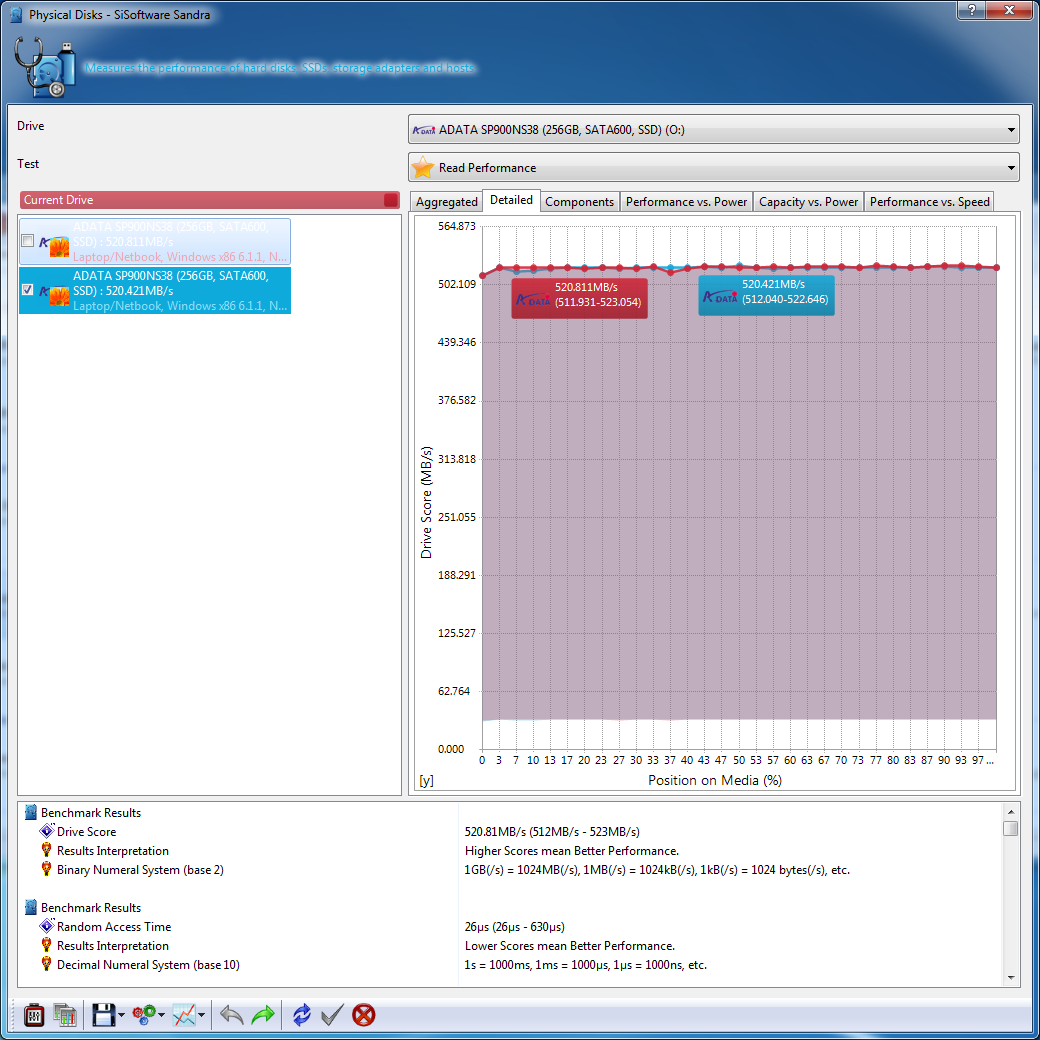
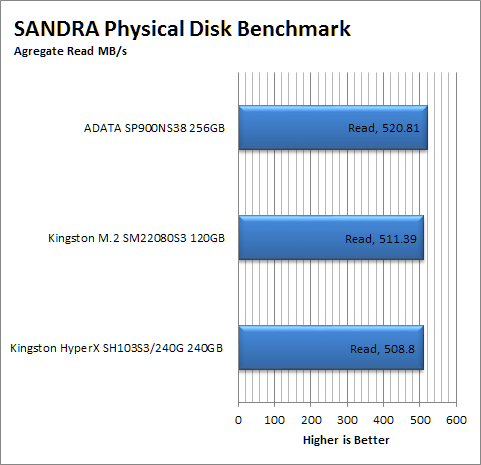
Under the predominantly sequential read tests in SANDRA we find the cache on the ADTA M.2 drive is more than up to the task of giving great performance. This is one of those times when you can see that a manufacturer is working to gear a product’s performance to the market that can use it. In many cases the smaller systems are going to be used to stream some sort of data, video, music, logs, firewall information IDP/IDS data etc. Having the higher levels of read performance will improve how these systems work.
Real-World file transfer -
As a final test we took two 7.4GB ISOs and moved them from the main system HDD (a Kingston SH100S3B on the SATA 3.0 Controller) to the target drive. This was timed and the max transfer time was recorded. We also took the time for some subjective testing to see how fast the drives “feel” The scores and our observations are below. For the transfer of 15GB of data from one drive to the other internally it took a little under 90 seconds with an average transfer rate of around 170MB/s not bad at all really.

